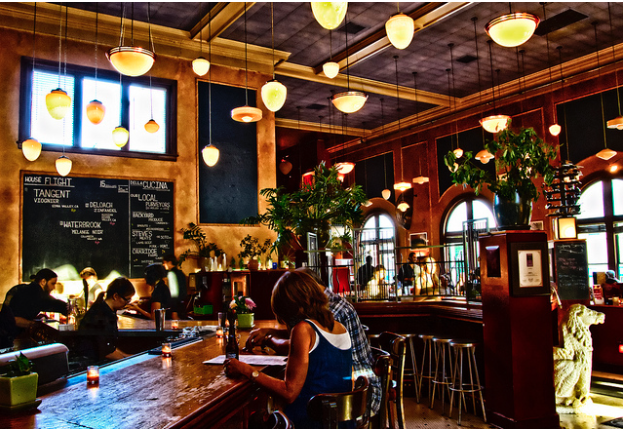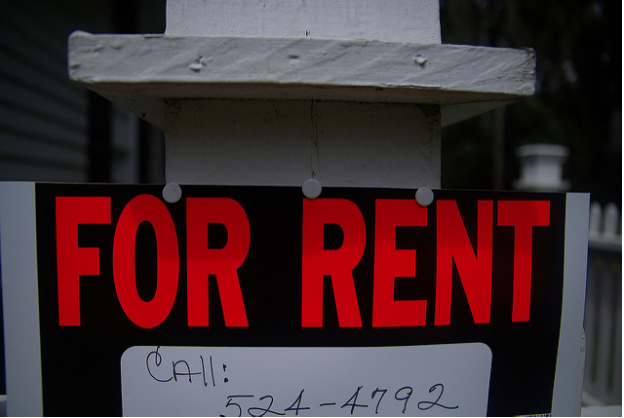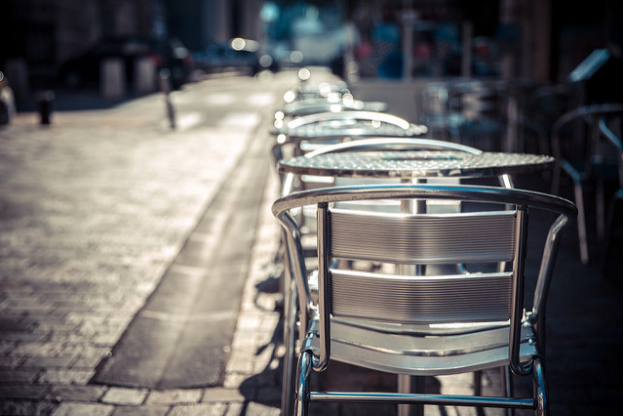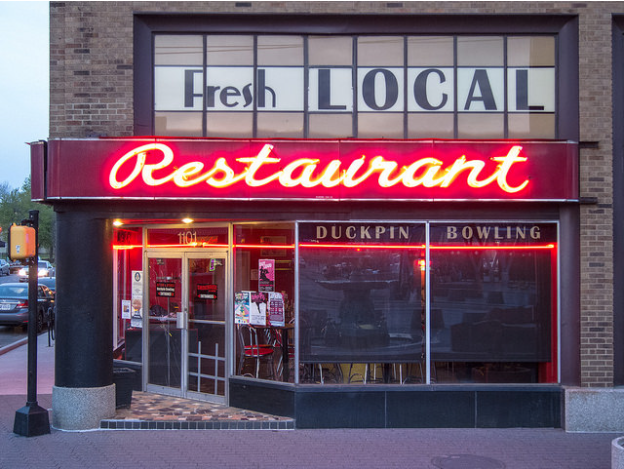 (Source: Flickr)
(Source: Flickr)
Picture this: your restaurant is doing extremely well. Reviews are great, clientele is growing, and you’re reliably making great profits. Could it be the right time to open a second restaurant location?
Opening a second restaurant location is an exciting step for a restaurateur. This step can help expand your business, bring your restaurant’s cuisine to a greater audience, and improve your reputation. However, opening a second location isn’t necessarily a cakewalk. You’ll have to go through many of the same challenges you did when opening the first location, and some that you may not have even considered.
This post offers helpful 8 tips for those who are considering opening a second location for their restaurant. These tips will not only help you decide if you’re ready to open a second location, but will bring your attention to important considerations you’ll have to take in mind both before and during the process.
 (Source: Flickr)
(Source: Flickr)
- Decide if you want to open a second location. First and foremost, think long and hard about whether or not a second location is a good decision for you at this time. Even if you have enough business to support a second location, it doesn’t necessarily mean it’s the right decision for you right now.
Is expanding your business something that you are mentally, physically, and financially prepared to do? Is the idea of growing your restaurant’s reach exciting? If so, then pursuing a second location is worth looking into further. On the other hand, if it all sounds like more trouble than it is worth, you’re probably not going to magically gain enthusiasm later on in the process, so maybe you should shelve the idea until a later date.
 (Source: Flickr)
(Source: Flickr)
- Choose a location. Location is important for any restaurant, but it’s a particularly important consideration when opening a second location. So, how close (or far) should they be? Well, that depends on your goals for a second location.
For some businesses, the second location is meant to manage overflow customers from the first location. In this case, a restaurant might lease or buy a space very close to the original location–even next door!–but instead of simply expanding the restaurant, they would open a more casual, bar setting, or takeaway-friendly version of their sit-down restaurant. In this case, both “locations” can coexist at the same time in such proximity.
However, if your intent is to expose a new set of customers to your restaurant’s cuisine, consider a bit more distance. Perhaps it’s across town or in a neighboring town (for instance, if you have a San Francisco location, opening a second outpost in Berkeley or Oakland), or maybe it’s in a different city entirely. Just keep in mind that managing a second location will become distinctly more tricky the further it is away from your “home base”.
- Write a new business plan. You already wrote a business plan for your first location, so you don’t have to do that again for location number two, right? Unfortunately, you’re wrong. While you can certainly borrow some of the content from your first business plan, this is in fact its own free-standing business (even if it has the same tax ID number!), so you’ll have to create a new business plan, with a new budget, new data, and new research. Things might have changed since the last time you wrote a business plan, and there are different considerations for the new space. Respect that by coming up with a new plan. It might seem like a lot of work, but it can save you a lot of potential headaches in the future.
- Keep your kitchen equipment consistent. Make sure that the equipment you purchase for the kitchen of your new restaurant is consistent with what you have in your existing location.
Remember: part of the draw of your restaurant is the way that the food is prepared. This means that in your new location, you’ll want to have a similar caliber of equipment in your kitchen. While it won’t be possible for both locations to churn out carbon copies of every dish, do your best to make it consistent. Buying the same types of blenders, pans, and other equipment will help you do this.
- Update your social media and website. If you’ve made the decision to open a second location, let your loyal customers know so that they can spread the word! It’s wise to wait until after the lease is settled and you have an idea of when the restaurant may open, but once you have some of this basic information, let the world know. Make sure your social media followers know that it’s in the works, and make note of it on your website. You can create buzz early on this way, which can bring more attention to your current location as well as raise awareness of your upcoming new location.
Be sure to post updates on social media and/or your website of your progress on the new location, too. People love an insider view and feeling like they are part of the process. Plus, it will increase their excitement as the opening date gets closer!
- Evaluate your menu. When opening a second location, sometimes you have to evaluate and edit your menu so that it is appropriate and effective for the new location. For instance, say your second location will be far smaller and you don’t have as much kitchen space. You may have to offer a more limited menu (which might not be such a bad thing; smaller menus are a trend these days!).
Or, for instance, if you do a brisk business in brunch in your original location but your second location is in a downtown business district where not much goes on outside of office hours, a change may need to be made. You may want to consider dropping brunch from the menu of the second location. Consider the logistics and situations that can affect your menu in your new location, and adjust accordingly.
 (Source: Flickr)
(Source: Flickr)
- Consider your restaurant decor. Like your menu, your restaurant’s decor may need some tweaking for a second location. While you want your look to be harmonious with the flagship location, you don’t want to force it. There are considerations, such as the location, the style of the building, and the layout which will affect how you lay out your seating chart and how you decorate your restaurant.
Keeping key details, such as the wood used for tables, or the style of light fixtures, or consistent dishware, will keep things looking consistent between locations while also allowing you the room to tailor your decorating to suit the new space.
- Focus on consistent service. If your first location has proven popular enough to warrant a second one, chances are, the service is a big part of your success. Don’t drop the ball when it comes to providing great customer service for your diners.
Instead of training a whole new staff to work the new location, have some of the old staff come over to the new location. This can be done on a part time basis, to train new employees, or as part of the core staff at the new location. Either way, it will allow you to retain some of the customer experience that diners have come to expect.
Conclusion: Opening a second restaurant location is an exciting, yet nerve-wracking, prospect. It can easily become overwhelming if you lose perspective. Remember to take the time to reflect on what aspects of your first location have led to the success that is allowing you to open a second location. It’s important to carry over the successful aspects while also respecting the new space. These tips will help take some of the stress out of the process, so that you can focus on building your new business and serving your customers excellent food!
Have you ever considered a second restaurant location?


